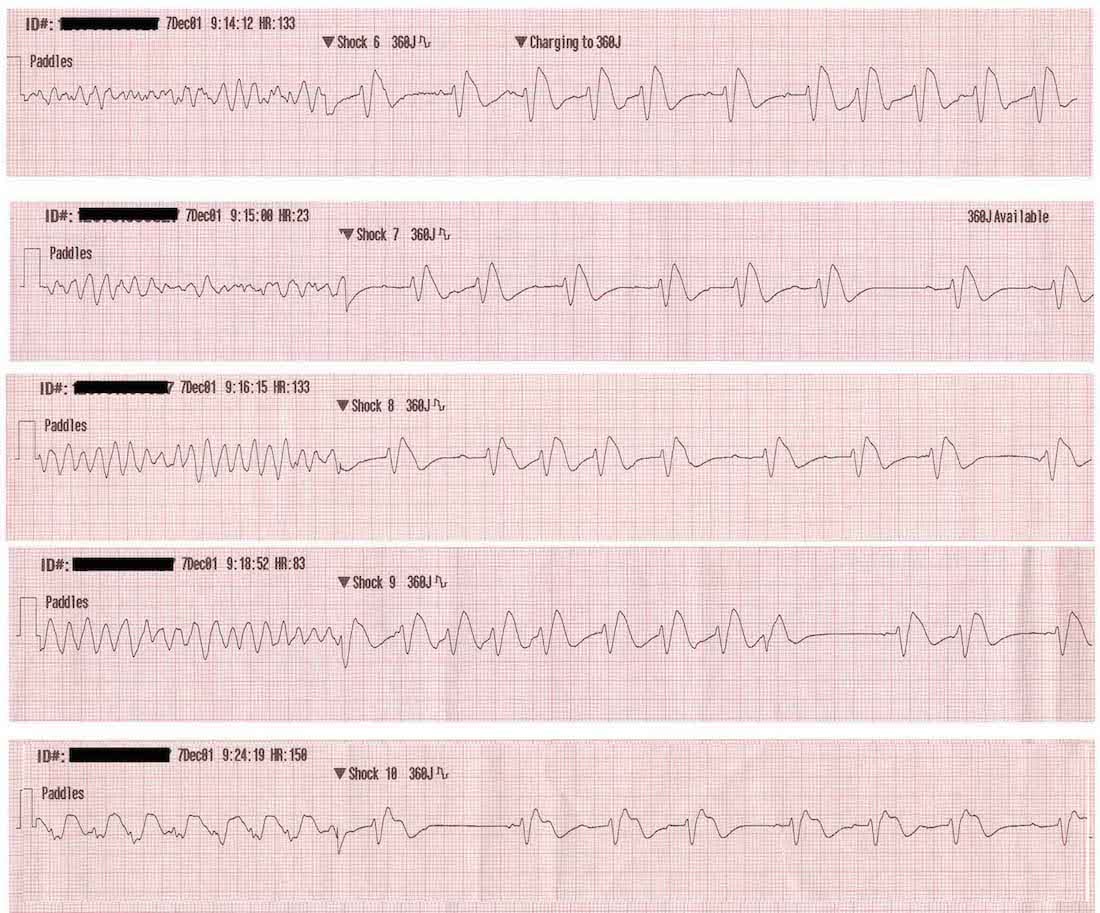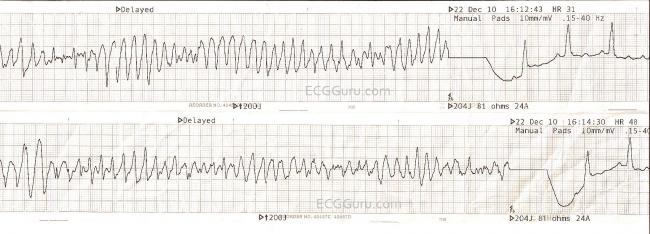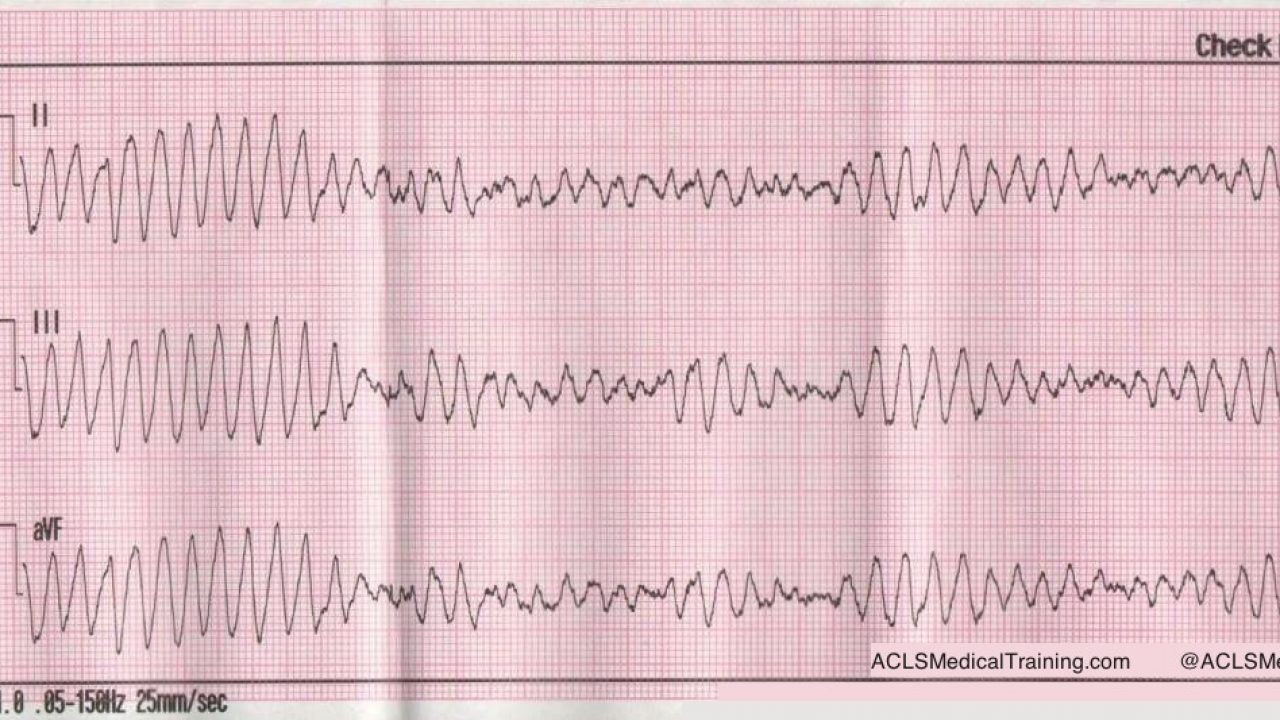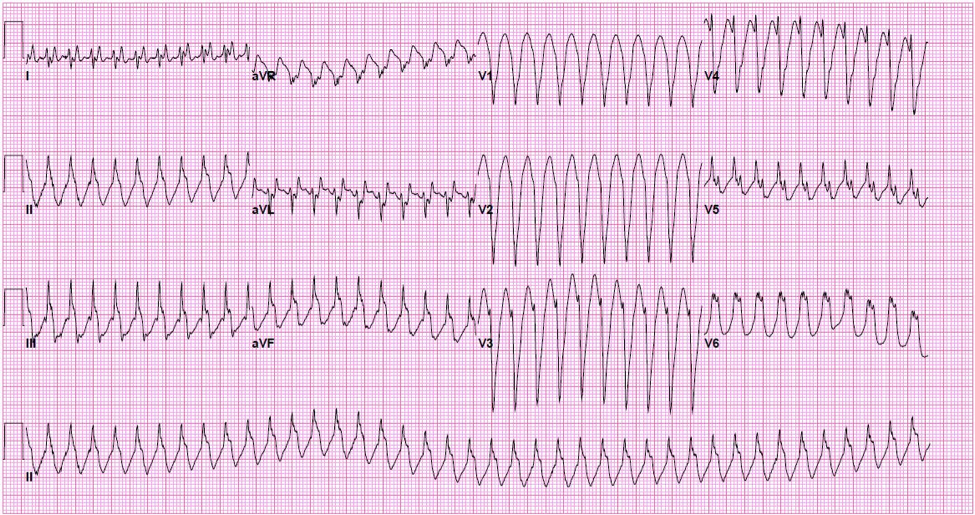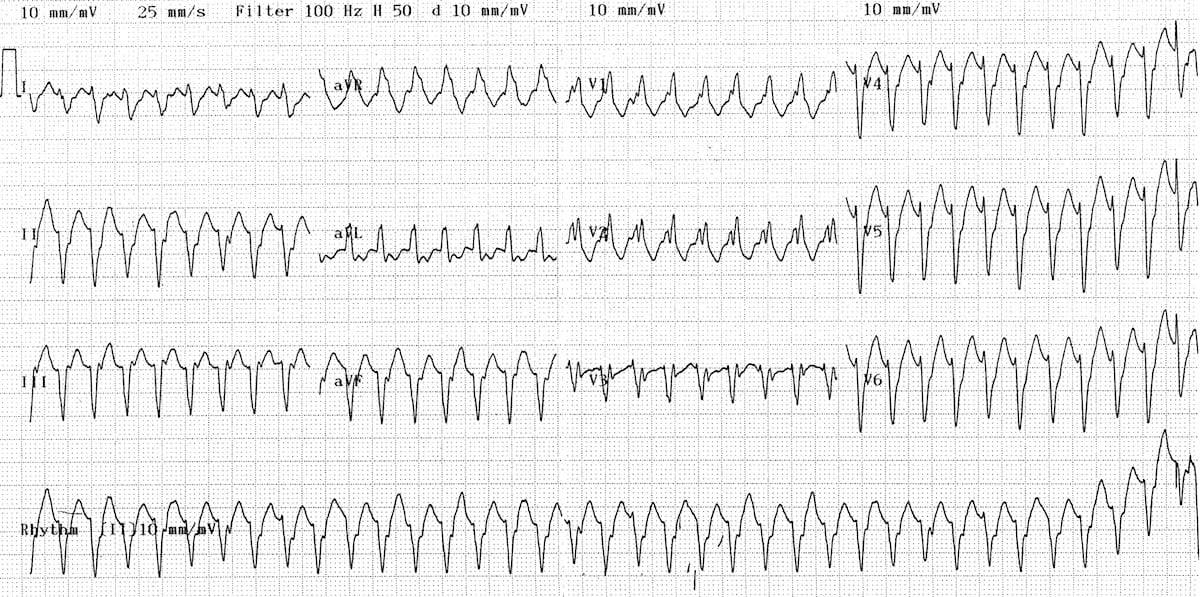V Tach Vs V Fib Ekg
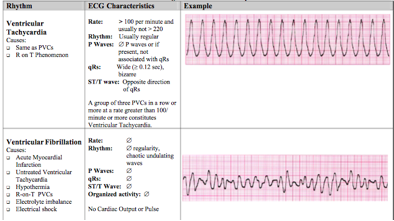
Sometimes this rhythm may occur as a.
V tach vs v fib ekg. Patients may present with or without a pulse. Some diagnosed patients may be placed on drugs to slow their heartbeat or anti coagulants to reduce stroke risk but most live without symptoms or problems and aren t even diagnosed. The atrial fibrillation is interrupted by a rapid and regular tachycardia with wide qrs complex. This rhythm usually appears on the monitor as a wide regular and very rapid rhythm.
Although there is a broad complex tachycardia hr 100 qrs 120 the appearance in v1 is more suggestive of svt with aberrancy given that the the complexes are not that broad 160 ms and the right rabbit ear is taller than the left. The course provides training on the key features of an ekg tracing. Have been summarized below. Ventricular tachycardia vs ventricular fibrillation arrhythmia means irregular cardiac rhythm and slow arrhythmias are called bradyarrhythmias and fast ones are called tachyarrhythmias there are various types of arrhythmias.
Always remember that ventricular tachycardia is the most common cause of wide qrs complex tachycardia. The 4th beat from the end is a premature ventricular beat and its qrs morphology is identical to the qrs seen during the tachycardia. A good starting point for learning about v fib and other types of ekg interpretation is our ekg basics training course. The points of difference between ventricular tachycardia and ventricular fibrillation.
On an ekg it is characterized by a normal rhythm with v fib looking random peaks occurring between beats. These features include observing p wave forms measurement of ekg intervals and segments assessment of rhythm calculating heart rate and the evaluation of other relevant wave segments. However on closer inspection there are signs of av dissociation with superimposed p waves visible in v1. A dangerous condition related to ventricular tachycardia is ventricular fibrillation v fib.
Ventricular fibrillation vfib electrocardiogram ecg blood tests. Wellens morphology criteria for vt in 1978 wellens et al 1 proposed the so called classical criteria to help in the differential diagnosis of supraventricular tachycardia with wide qrs complex and ventricular tachycardia. This ecg is a difficult one. Ventricular tachycardia v tach typically responds well to defibrillation.





